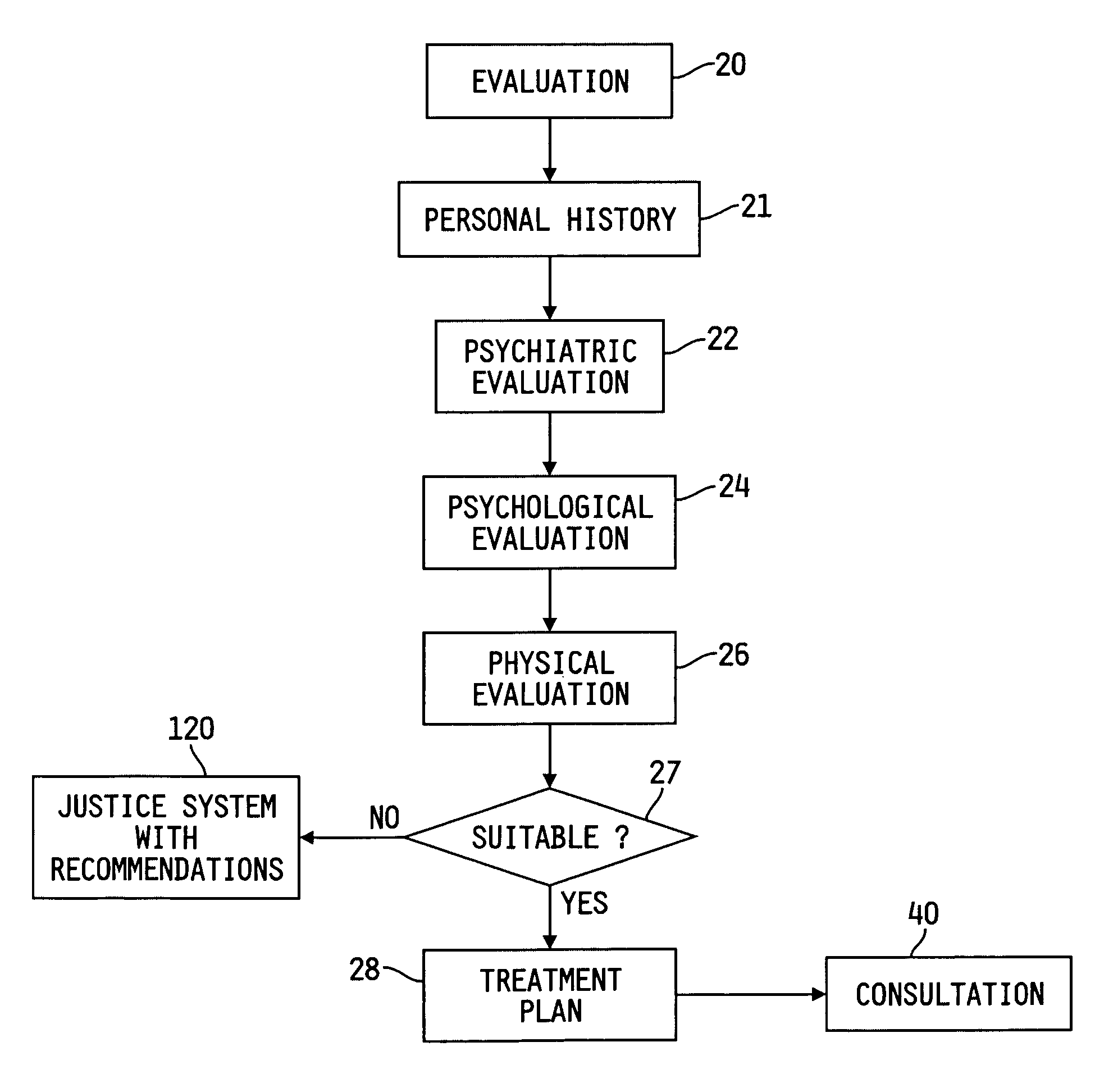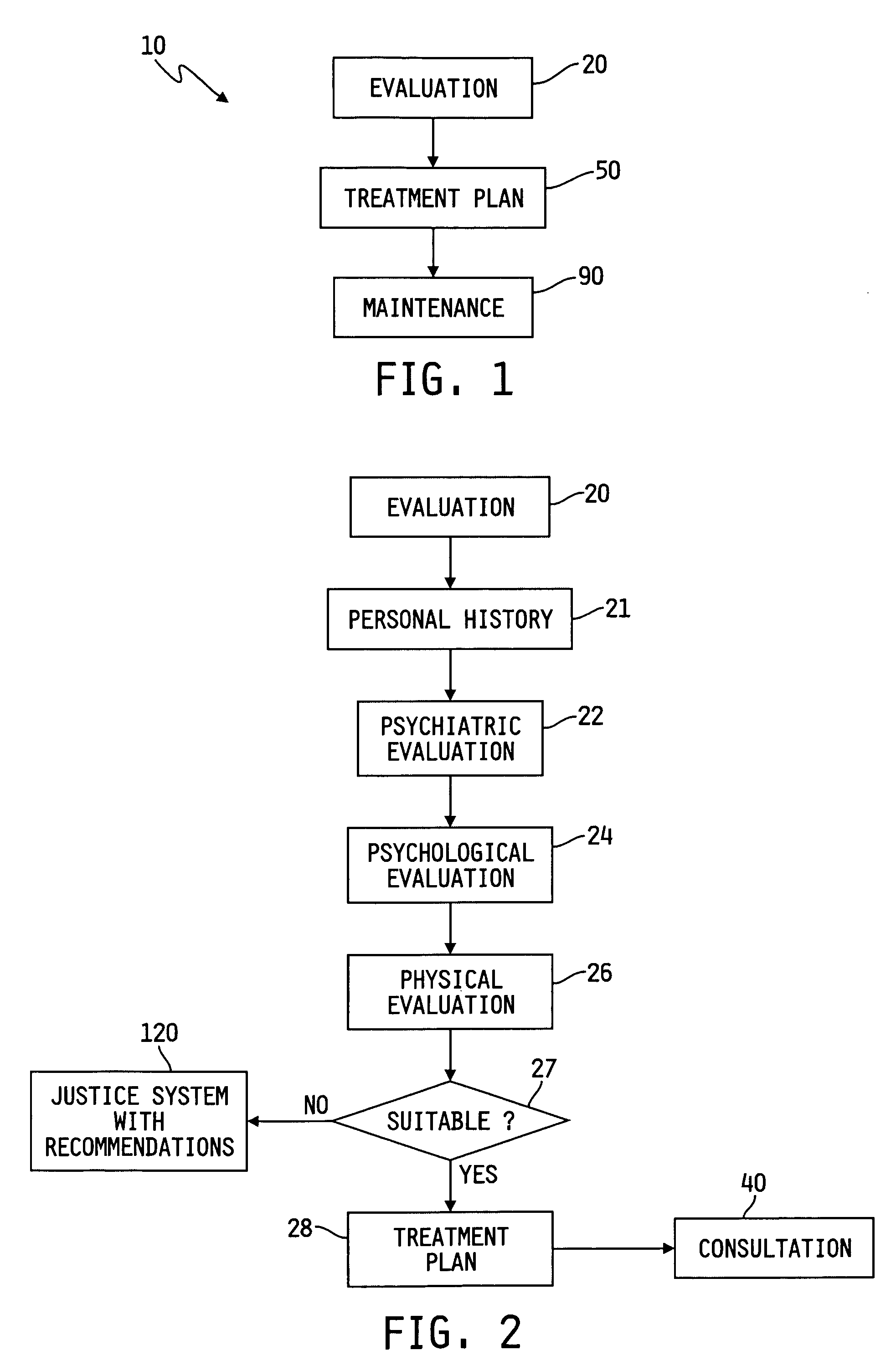Method of treating dependencies
a dependency and treatment method technology, applied in mental therapies, instruments, data processing applications, etc., can solve the problems of inability to treat dependency, progress in severity of inappropriate or criminal behavior, and individuals perhaps most in need of treatment have often already reached the later and more severe stages, so as to prevent relapse, reduce and/or eliminate, the effect of avoiding relaps
- Summary
- Abstract
- Description
- Claims
- Application Information
AI Technical Summary
Benefits of technology
Problems solved by technology
Method used
Image
Examples
Embodiment Construction
[0027] Referring to FIGS. 1-11, an illustrative treatment program or method 10 for treating addictions is disclosed. Whenever any examples are given in this application, such examples are meant to be illustrative in nature and are without limitation. While the generalized treatment program or method 10 may be adapted to treat any type of dependency, it is useful in the treatment of chemical dependency in general and for the treatment of non-violent, chemically dependent felons, who may face one or more years of imprisonment (an executed sentence), the “target population.” For example, the judicial system may use the method 10 as an alternative sentencing option for individuals in the target population as best seen in FIGS. 10 and 11. The method or program 10 illustratively may comply with applicable local, state and federal rules, regulations, laws, ordinances, standards, certification requirements and the like; and may choose to meet accreditation requirements established by any de...
PUM
 Login to View More
Login to View More Abstract
Description
Claims
Application Information
 Login to View More
Login to View More - R&D
- Intellectual Property
- Life Sciences
- Materials
- Tech Scout
- Unparalleled Data Quality
- Higher Quality Content
- 60% Fewer Hallucinations
Browse by: Latest US Patents, China's latest patents, Technical Efficacy Thesaurus, Application Domain, Technology Topic, Popular Technical Reports.
© 2025 PatSnap. All rights reserved.Legal|Privacy policy|Modern Slavery Act Transparency Statement|Sitemap|About US| Contact US: help@patsnap.com



